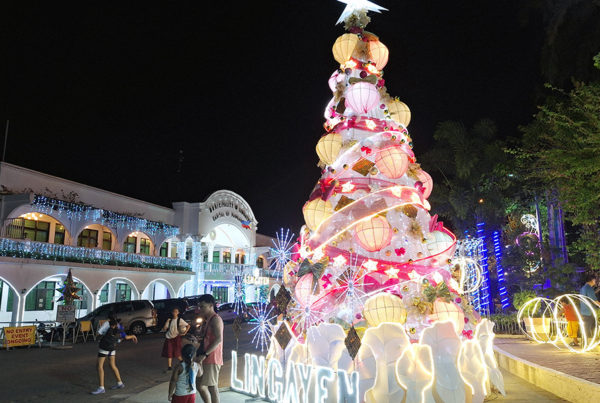Roots
Cool Capulanas

By Marifi Jara
QUELIMANE, Mozambique–A United States of Africa.
That’s what the ever-controversial Col. Muammar Gaddafi of Libya is pushing for, more so now since assuming a couple of weeks ago the chairmanship for the African Union, which has 53 member nations. It’s a bold dream (some would say characteristically crazy) but hey, Gaddafi hasn’t grabbed headlines by being drab (the song Sino ang tunay na baliw is playing in my head now). And his outfits very well mirror that. Say what you like about the guy, but there is no arguing that his fashion style is so vibrant, so, so well, African. And I mean that in the most flattering sense. For all the diversities among the African nations, one thing that I have always associated the whole continent with is the colorful fabric of the various cultures.
Despite the strong influence of western clothing, traditional African garments have endured and here in Mozambique, capulanas are as cool as ever.

A capulana is a piece of cloth, about 1.5 meters by 1 meter; these are usually multi-colored and with various designs – checkered, floral, stripes and other asymmetrical patterns. It is called kanga in other African countries or kitenge in the eastern African region. I am sure there are many other names elsewhere.
It’s like our grandmothers’ tapis, or perhaps a more familiar comparison would be our sarong in Asia, which has become a trendy accessory for the beach, anywhere in the world.
The capulana has more, many more, practical uses around here other than just being worn as a skirt (both by women and men in the more remote villages) – which I think is an art in itself, what with the ease they wrap and tuck it around the waist and it stays there, comfortably hugging the body. I actually feel “uncool” because in my attempts to wear one, I just walk around the house with it and I have to keep re-wrapping and re-tying it, and I have wondered whether it has something to do with not having a well-endowed African hips and behind (or maybe I just have to keep practicing to get it right). I’ve also seen women leave out a couple of inches of cloth just where they tuck it in and use that as some secret compartment for money.
Other capulana uses: head wrap, baby carrier, grains bag, wrap for a bundle for belongings, mat sheet, warmer during the cold months, protection against the sun during the summer, beach mat (perhaps it would be useful for covering the nose when going to the Dagupan beach), table cloth, and there must be others I have not realized. And all that using the cloth just as it is, without being sewn or cut. A real all-around basic item that is great to carry around, especially when traveling. It is also widely used as a political campaign tool and it is not surprising to see people walking around in capulanas printed with the faces – not just the names — of government leaders (might not be a bad idea for the 2010 elections in the Philippines).
The capulana tradition is not confined to the rural areas here. I have seen women in the urban capital Maputo wearing or using one. A Mozambican friend, Adelaide, a 40-something modern working wife and mother of two, wears one when she is doing housework and she looks perfectly comfortable in it as much as in her sexy clothes which she wears when we have parties in their house or going out for drinks and dancing.
There is something so strikingly primitive about the capulana, somehow a reminder of the basics in life, andthe raw beauty of the world with its vivid colors.
As for Gaddafi, well, the world is surely a more, at best, intriguing place, literally and figuratively, with leaders like him.







